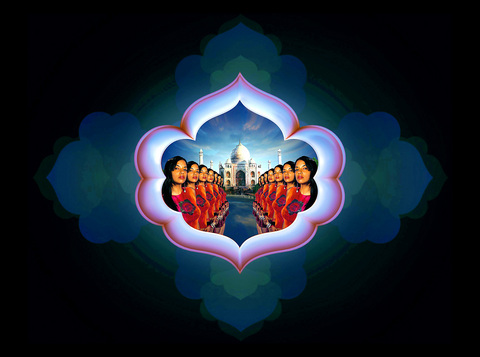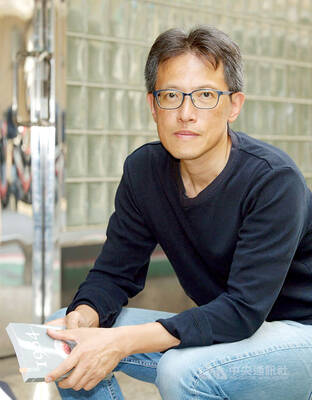On a fine spring day in Manhattan, Reshma Taufiq, 28, was the first to audition for a role on a new MTV channel that will be aimed at second-generation desis, or immigrants from the Indian subcontinent. Her emerald-green bodice fit snugly atop navel-baring jeans, and her long black hair curtained her cheekbones as she sweated under the studio lights, trying sexy, then cheery, then exuberant variations on "Live from Jackson Heights, Queens, it's MTV Desi."
Taufiq summed herself up: R&B artist who is bilingual in English and Hindi; news reader for a local ethnic channel on which she conducts phone-in quizzes on Bollywood trivia; frequenter of the late-night desi party scene who thinks that arranged marriages are not such a bad idea; and, well, chemical engineer now working in software development at Hewlett-Packard.
Azhar Usman, 29, with his knitted skullcap and full beard, presented somewhat differently. An MTV executive, he explained, had recruited him, saying, "We're going to redefine the identity of the MTV host. It doesn't have to be someone sexy and good-looking." A comedian (and lawyer) from Chicago, Usman used the audition to invent an exaggeratedly accented (and quite amusing) character: Vijay the VJ.

PHOTO: NY TIMES
Most of the applicants thanked MTV for thinking of them as a demographic ready for a music-video channel all its own. "It's so nice to be recognized," said Tara Austin, a Sri Lankan-American from Los Angeles. "I am just an American girl at the end of the day, but I have a strong South Asian background. I eat with my hands, you know? We're, like, so hungry for hearing our own culture."
Hybrid Channel
That's what MTV World is counting on as it introduces three new channels focusing on the growing population of young, acculturated Asian-Americans: first, MTV Desi, which will go on the air in late July; then MTV Chi, for Chinese-Americans, by the end of the year; and MTV K for Korean-Americans next year.

PHOTO:NY TIMES
The channels will not be merely tweaked reproductions of MTV India, MTV China or MTV Korea, three of MTV's 42 channels abroad. Rather, they will, like their target audiences, be hybrids, blending here and there and grappling with identity issues, mostly in English.
MTV Desi will serve as the prototype. Interspersed among Bollywood videos, electronic tabla music and English-Gujarati hip-hop, it will feature brief documentary clips profiling desis, comic skits about South Asian-American generational conflicts, interviews with bicultu-ral artists and desi house parties, live. MTV Chi will mix up Mandarin rock, Canto pop and Chinese-American rap; MTV K will tap into South Korean hip-hop and the little-known but vibrant Korean-American pop scene. MTV Desi will start on satellite nationally and then move to digital cable systems in various parts of the country.
MTV World's premise for these new channels was commonsensical: that young bicultural Americans have tastes different from those of youths in their ethnic homelands and therefore need, as it were, a customized MTV.
In that premise lay a confluence of academic and commercial thinking. For at least a decade, academics have explored the idea that many immigrants possess "transnational" identities. That is, aided by jet travel, technology and global commerce, they -- and their children -- maintain vital, current links to homelands that are never really left behind. There has been a fervent debate in intellectual circles about the "cultural space" inhabited by the children of recent immigrants and to what extent its very "hybridity" makes it a place of its own.
MTV's exploration was less theoretical: market research through house parties and minigroups involving Asian-Americans in New York and Los Angeles. MTV concluded that second-generation immigrants not only desire their own age-appropriate connection to their parents' homeland but that they also passionately want to see their struggle to define themselves as hyphenated Americans mirrored on television.
"If you're a young Chinese-American or Indian-American, what channel do you tune into to see yourself, to see artists that reflect your lifestyle?" asked Nusrat Durrani, 44, senior vice president and general manager of MTV World. He has an almost missionary zeal about this project, but then, as a native of Lucknow, India, who now lives in Brooklyn, he has a firsthand view of hybrid life. As he sees it, the Asian-American population, which is booming, is also coming of age. "This country has had the African-American experience, the Hispanic-American experience, and now it is the time for the third-largest group, the Asian-Americans," he said.
The Asian-American population grew to 12.3 million in 2004 (or 14 million, when including Asians of mixed race) from 6.9 million in 1990, according to the Census Bureau. The three target audiences for the new MTV channels, especially Indian-Americans, are better educa-ted and more affluent than average Americans, according to the census. The median family income of an Asian Indian in the US was US$70,708 in 1999, compared with US$50,046 for all Americans; 64 percent held at least a bachelor's degree, compared with 24 percent for all American families.
Untapped Markets
Still, Durrani said, "The Asian-American experience has not been articulated on the national stage, although there are these incredibly vibrant subcultures, artists from all these communities who are entirely untapped."
Enter MTV, ready to give these artists a platform, to "super-serve" the young ethnic populations of the US and, then, perhaps, to entice young Americans of all backgrounds to tune in and check out a universe, cultural and musical, that they know little about.
These channels won't live or die by the size of their crossover audience, said Van Toffler, president of MTV Networks, a division of Viacom. Initially MTV will be supplementing an investment of what he called "several millions" with some programming from MTV UK, MTV India and other international MTVs.
But there is nonetheless the hope that these channels will reach beyond their niche audiences, meaning that MTV, which has long exported American pop culture to the world, is trying to import global pop culture into the US.
When MTV began to establish channels abroad in the late 1980s, critics viewed the expansion as quintessential cultural imperialism that would homogenize youth culture worldwide. Early on, though, MTV learned that it made better business sense to be "glocal" -- their motto is "think global, act local" -- than to impose a wholly American cultural product. Young people, wherever they were, would watch international acts for only so long before they wanted to see something of their own. So each of MTV's international channels developed local talent and its own personality: MTV Indonesia has a call to prayer, MTV Italy has cooking shows, MTV Brazil is extremely colorful and, sartorially speaking, quite bare.
Still, the MTVs around the world share that distinctive, hyperkinetic MTV footprint, and they are profoundly commercial, and not always profoundly artistic, enterprises. So some second-generation immigrants are leery of MTV's zeroing in on their market potential.
One young woman hoping to be a VJ, Niharika Desai, 27, declared during her interview that she had auditioned partly out of curiosity to see "what corporate America thinks of me."
Her comment met poker faces from Durrani, who that day wore all black and studded jewelry, and Lem Lopez, a Filipino-American executive producer for MTV World, who wore his long hair in a slipknot atop his head and his floral shirt loose and half unbuttoned.
"Not that you're corporate," Desai said to them, pedaling backward. "I know that you're a kinder, gentler version of the Man."
Projecting a kind of perky punk aesthetic, Desai wore her hair shaggy, with a streak of blond, her jeans folded up and her Converse sneakers faded. A video editor who grew up in upstate New York, she verbally motored on, trying to make amends, sort of.
"My whole thing coming here, it's really cool that there's going to be a desi channel," she said. "I also have some thoughts. Growing up, I became who I am more from influences in Poughkeepsie than from the Indian community. My parents didn't raise me watching Hindi films and what not. So I implore you, please do something more than Bollywood." Actually, she punctuated Bollywood with an expletive, and then again when she clarified: "Don't get me wrong. I love Bollywood. But desi kids in America would so benefit from having a cool influence and learning hip stuff, too, like MIA."
Desai was referring to Maya Arulpragasam, a Sri Lankan-English performer who goes by the stage name MIA. Clearing his throat, Durrani, who seemed to be charmed by Desai's irreverence, said simply: "I want to put you completely at ease. This isn't corporate America. And MIA is so central."
MIA is the daughter of a Tamil militant whose family fled the violence in Sri Lanka and eventually settled in a housing project outside London. There, she said in an interview that will be shown on MTV Desi, she started over as refugee "scum," with hand-me-down clothes, in special schools, on the lowest rung of the English social ladder.

Mongolian influencer Anudari Daarya looks effortlessly glamorous and carefree in her social media posts — but the classically trained pianist’s road to acceptance as a transgender artist has been anything but easy. She is one of a growing number of Mongolian LGBTQ youth challenging stereotypes and fighting for acceptance through media representation in the socially conservative country. LGBTQ Mongolians often hide their identities from their employers and colleagues for fear of discrimination, with a survey by the non-profit LGBT Centre Mongolia showing that only 20 percent of people felt comfortable coming out at work. Daarya, 25, said she has faced discrimination since she

April 21 to April 27 Hsieh Er’s (謝娥) political fortunes were rising fast after she got out of jail and joined the Chinese Nationalist Party (KMT) in December 1945. Not only did she hold key positions in various committees, she was elected the only woman on the Taipei City Council and headed to Nanjing in 1946 as the sole Taiwanese female representative to the National Constituent Assembly. With the support of first lady Soong May-ling (宋美齡), she started the Taipei Women’s Association and Taiwan Provincial Women’s Association, where she

It is one of the more remarkable facts of Taiwan history that it was never occupied or claimed by any of the numerous kingdoms of southern China — Han or otherwise — that lay just across the water from it. None of their brilliant ministers ever discovered that Taiwan was a “core interest” of the state whose annexation was “inevitable.” As Paul Kua notes in an excellent monograph laying out how the Portuguese gave Taiwan the name “Formosa,” the first Europeans to express an interest in occupying Taiwan were the Spanish. Tonio Andrade in his seminal work, How Taiwan Became Chinese,

More than 75 years after the publication of Nineteen Eighty-Four, the Orwellian phrase “Big Brother is watching you” has become so familiar to most of the Taiwanese public that even those who haven’t read the novel recognize it. That phrase has now been given a new look by amateur translator Tsiu Ing-sing (周盈成), who recently completed the first full Taiwanese translation of George Orwell’s dystopian classic. Tsiu — who completed the nearly 160,000-word project in his spare time over four years — said his goal was to “prove it possible” that foreign literature could be rendered in Taiwanese. The translation is part of